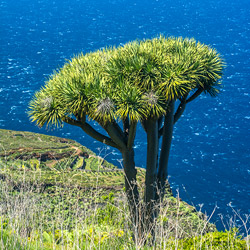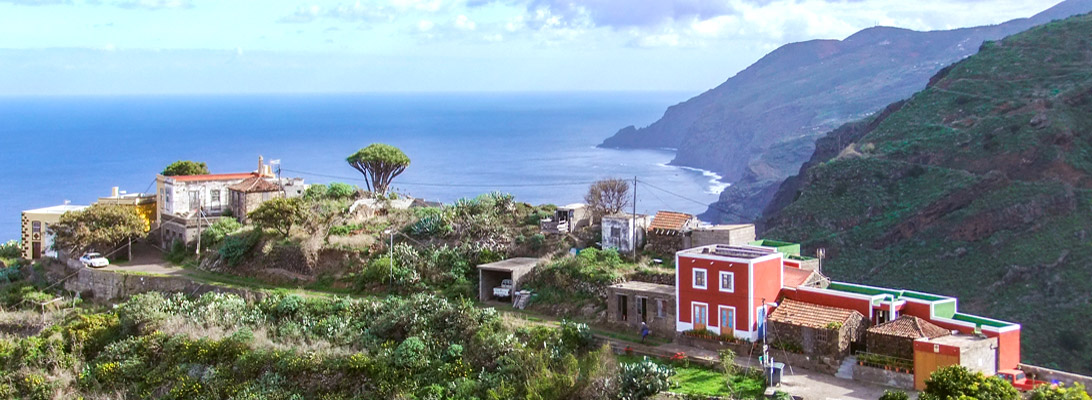Dragon trees (dracaena, draco, drago) are an agave plant and grow up to 20 meters high. It is difficult to determine the age of a dragon tree because they do not have annual rings. They can live for several hundred years. The Methusalem of Icod on Tenerife is currently estimated at "only" 370 years (instead of thousands, as previously assumed). Only after 15 years do they bloom for the first time and then only every four to five years afterward. On La Palma, most dragon trees can be found in the north near Las Tricias (Barranco de Buracas), La Tosca, Garafia, El Tablado, Franceses, Don Pedro or Zumacal/San Antonio and in Breña Baja. Famous are the twin dragon trees near Puntagorda and the dragon trees at the Belmaco Cave and the twin trees at San Isidro are also easy to see from the road. Dragon trees are protected and may not be exported. Those who buy seeds need a lot of patience and meticulous care in order to germinate them at home.
Dragon trees are under conservation
Dragon trees were considered sacred by the Benahoaritas (Guanchen of La Palma) as symbols of fertility and wisdom. Tribal kings held court in their shadows and spoke justice. There are many legends entwined around the dragon tree. Its juice was used by the Spaniards to dye red fabrics and ceramics. The ancient Canarians used it to embalm mummies and attributed its healing properties. Outside the Canary Islands, the dragon tree has also survived on the Cape Verde Islands, the Azores, and Madeira. In the Mediterranean the last ice age destroyed it. After the Spanish conquest, the dragon tree forests on the Canary Islands at that time underwent extensive clear-cutting, only a few survived. Since the 90s, La Palma has been reforested and many young dragon trees were planted.

















